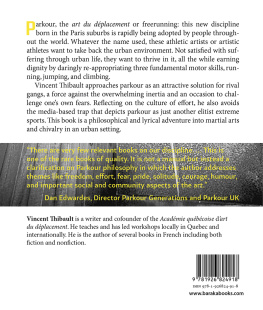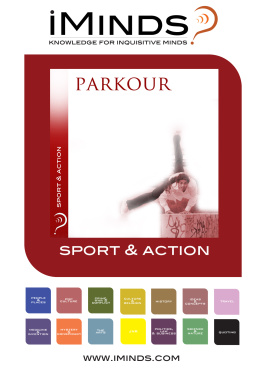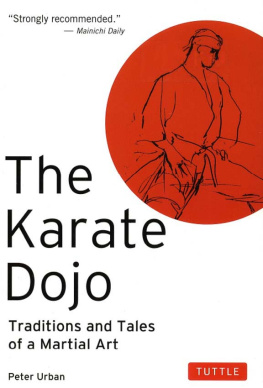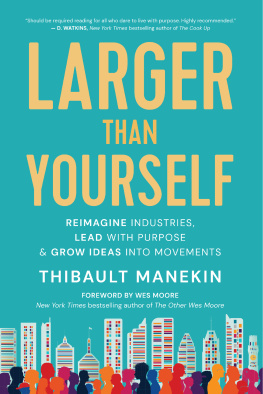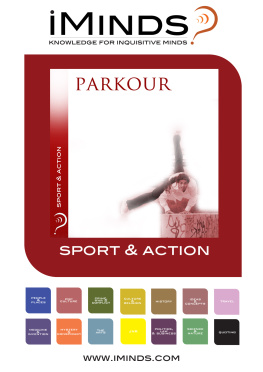Originally published as LArt du dplacement, Force, dignit, partage
2012 Les ditions du Septentrion
Publi avec lautorisation des ditions du Septentrion
Translation Baraka Books 2013
All rights reserved. No part of this book may be reproduced or transmitted in any form or by any means, electronic or mechanical, including photocopying, recording, or by any information storage and retrieval system, without permission in writing from the publisher.
ISBN 978-1-926824-91-8 pbk; 978-1-926824-95-6 epub; 978-1-926824-96-3 pdf; 978-1-926824-97-0 mobi/kindle
Cover photo: Bobby Buildering by Andy Day
Sketches are by Vincent Thibault
Cover by Folio infographie
Book and epub design by Folio infographie
Translated by Casey Roberts
Legal Deposit, 3rd quarter 2013
Bibliothque et Archives nationales du Qubec
Library and Archives Canada
Published by Baraka Books of Montreal
6977, rue Lacroix, Montral, Qubec H4E 2V4
Telephone: 514 808-8504
info@barakabooks.com
www.barakabooks.com
Printed and bound in Quebec
Baraka Books acknowledges the generous support of its publishing program from the Socit de dveloppement des entreprises culturelles du Qubec (SODEC) and the Canada Council for the Arts.
We acknowledge the financial support of the Government of Canada, through the National Translation Program for Book Publishing for our translation activities and through the Canada Book Fund (CBF) for our publishing activities.
Trade Distribution and Returns
Canada and the United States
Independent Publishers Group
1-800-888-4741 (IPG1);
orders@ipgbook.com
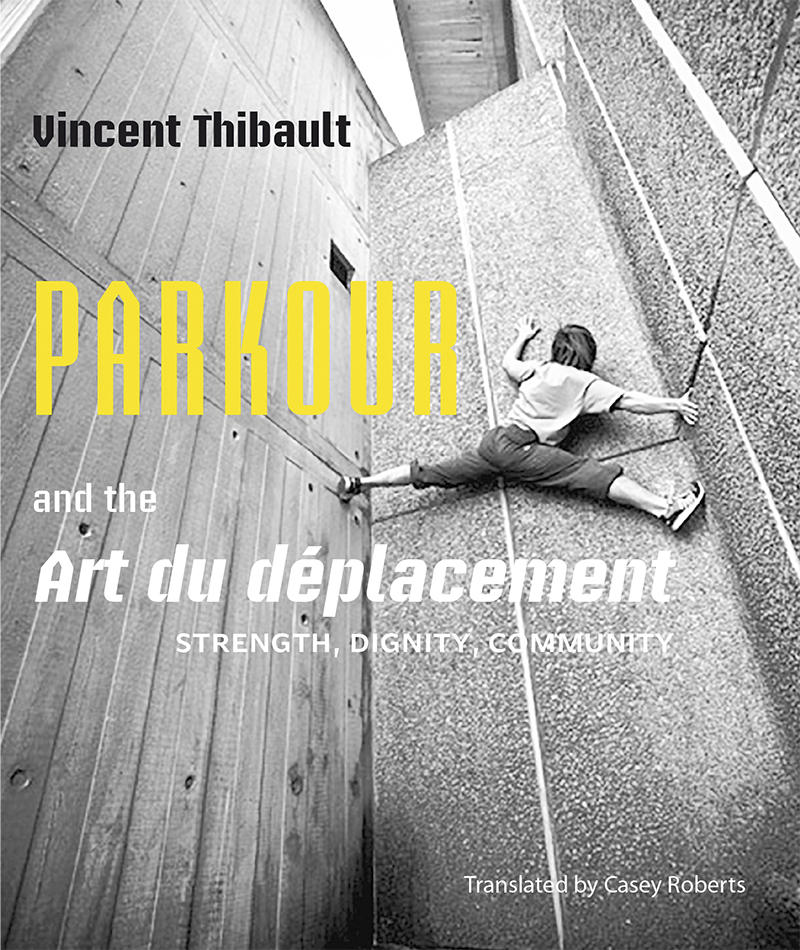
Foreword
By Dan Edwardes
Director Parkour Generations and Parkour UK
Parkour is a subject close to my heart. Ive been practicing for more than ten years at the time of writing this, coaching for the past seven, and played a small part in helping the discipline spread first across the UK and then around the world. As a physical practice it has dominated my personal training since I discovered it, filling a gap that I was unaware existed in my own development, and as a vehicle for psychological challenge it has pushed me further than I ever thought possible. However, far more important than what it has done for me personally is what I have seen it do for countless others in an endless variety of scenarios and situations.
When we started coaching via our sole class in London in 2005 it was, I believe, the first formal and accessible coaching environment in the world for the discipline of parkour. Prior to this only the French foundersthose who had been Yamakasiprovided any teaching and that was to small groups of select students on a somewhat informal basis; a mentorship, almost, which is of course a fantastic way to transmit knowledge.
But mentoring in this way has, unfortunately, a very limited reach. It isnt accessible. And so the benefits and rewards of practicing this incredible art would always be limited to those few individuals fortunate enough to be able to access those founding practitioners in the suburbs of Paris. What we have seen since the opening of the Parkour Genera-tions Academy in London is an explosion of coaching, teaching and involvement across the world that has made parkour arguably the fastest growing physical discipline of the twenty-first century.
It has now touched tens, hundreds of thousands of people across every region of the world, is being offered within schools as a physical education option, utilized in social inclusion programmes for disadvantaged youths, taught to sports education students in universities and even transmitted to professional organizations such as the military, law enforcement, and emergency services. Further, there are now formal, recognized coaching qualificationsthe A.D.A.P.T. Programmecreated and delivered by many of the founders and principal developers of the art in France and the UK.
These have been broad steps taken by a relatively young and emerging discipline, but this is testament, I think, to one thing: the strength, dedication and resourcefulness of the worldwide communityattributes that are central also to parkour itself.
Books like this one are a part of that. Hopefully a growing part of it, as to date there has been very little of real value published on parkoura handful of books at best, and many of those in only one language such as David Belles Parkour and Julie Angels Cine Parkour.
But this one adds to that small collection of works of value. Its not a book of how-to but rather an insight into the philosophy of parkour, tackling themes such as freedom, effort, fear, pride, loneliness, courage, humour, and the ever-present social and communal aspects of the art. Which, in a sense, does make it a how-tobecause parkour is not simply a collection of movement techniques and training methods: its a concept, an idea, a way of thinking and being. Its an art of living.
Now read on and see why.
Introduction
T his book is an attempt to understand what parkour, lart dudplacement, is and what it can be, and at the same time, both an offering to the disciplines pioneers and a reflection on my own practice. It is aimed at those who, thinking the demanding nature of parkours exercises are beyond their capabilities, are nevertheless curious, as well as at people who want to learn to move differently, or to find pleasure in new ways of interacting with the objects in the urban environment; at officers of the peace and mayors concerned for our alienated youth; at beginners who are still a bit confused and at experienced practitioners who want to open new perspectives on their art. I address myself to this last group with a good bit of humility, as I still consider myself their student. Some will find my original vocabulary and leaps of thought audacious. But this is only, after all, my own point of view. Im hoping that everyonewhether experienced or notwill be able to find some inspiration in this book. And Im dreaming, with a mixture of respect, recognition and pride at what this discipline has to offer, that this book might represent a new point of departure for thinking about parkour. A kind of thinking that leads deeper into life itself.
Note from the Author
) ur goal is not to write a history of parkour or launch a debate on terminology. For some people familiar with the practice, the terms parkour, lart du dplacement, and freerunning are not exactly synonymous. For example, it is sometimes said, rightly or wrongly, that parkours approach is more pragmatic, freerunnings more aesthetic. There are also ideological nuances (motivation, conceptions of sharing, etc.). Of course, both parkour and lart dudplacement reflect the French origins of the discipline. Parkour is from the French parcours, which means route, itinerary, process or path. And dplacement is the action of moving from one place to another.
In this book, however, we use these three terms interchangeably, with a preference for parkour. In the French text, we liked lart dudplacement, which although encompassing a great deal of territory, seemed perfectly comparable to martial arts or plastic arts. In the translation, we have mostly used the word parkour in an effort to lighten the text. But above all, we hope that the use of these different terms leads to a larger sense of community, since this book is written in the spirit of friendship.
It goes without saying that the sweeping generalizations and romantic side trips contained in this book are the sole responsibility of the author.

